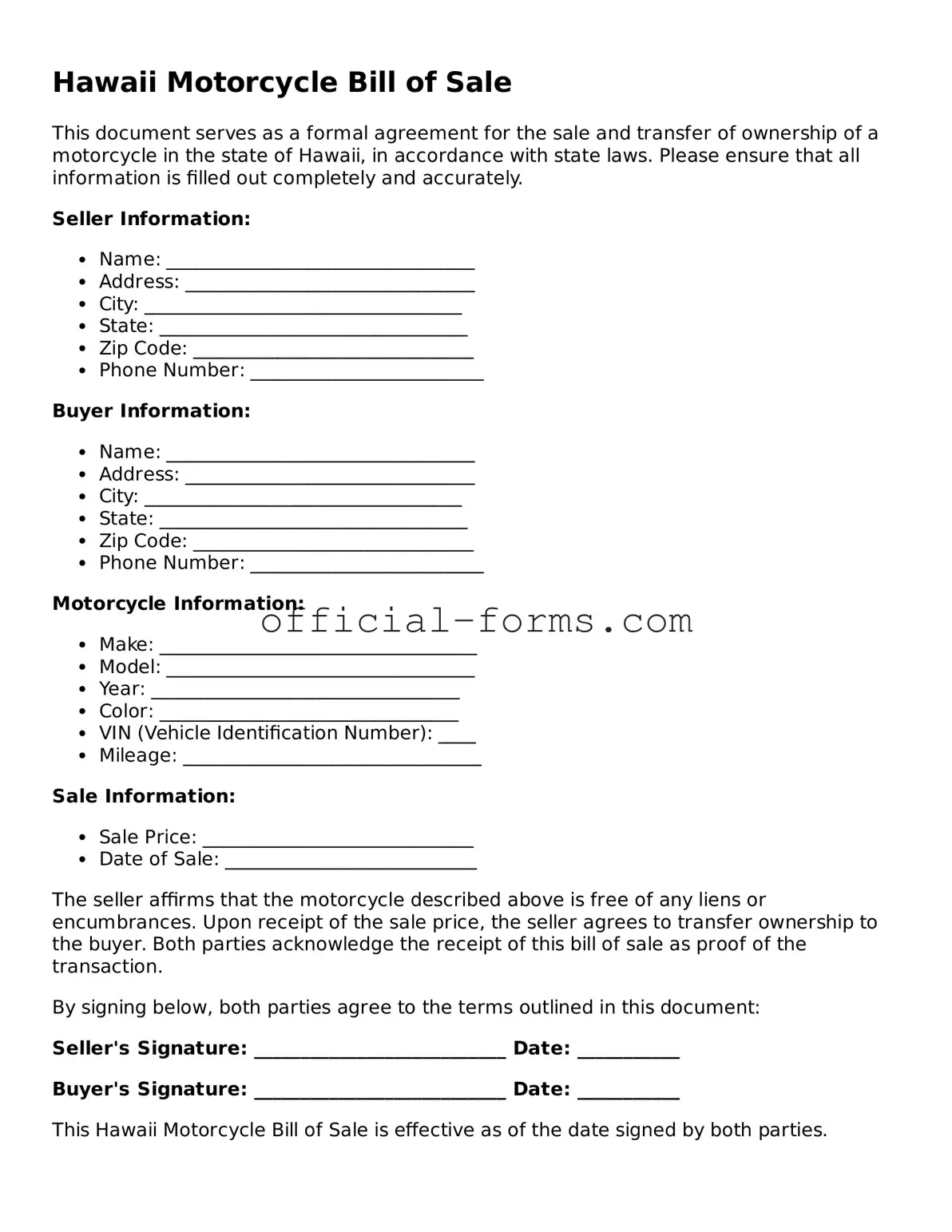The Hawaii Motorcycle Bill of Sale form serves as an essential document for anyone involved in the buying or selling of a motorcycle in the state of Hawaii. This form provides a clear record of the transaction, detailing important information such as the names and addresses of both the seller and buyer, the motorcycle's make, model, year, and Vehicle Identification Number (VIN). Additionally, it includes the sale price and the date of the transaction, ensuring both parties have a mutual understanding of the agreement. A properly completed bill of sale can help protect the interests of both the buyer and seller, offering proof of ownership transfer and serving as a safeguard against potential disputes. Furthermore, this document is often required for registering the motorcycle with the state’s Department of Motor Vehicles (DMV), making it a crucial step in the buying process. Understanding how to accurately fill out this form can streamline the transaction and provide peace of mind for both parties involved.
